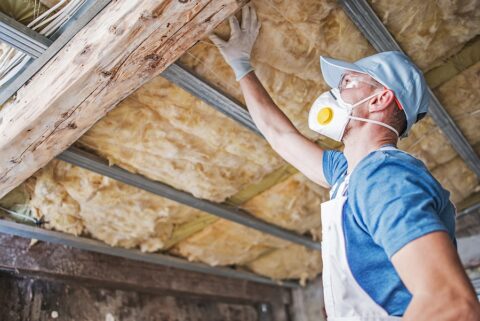>>> DOWNLOAD THE PDF TRANSCRIPT
Fully inspecting the interior and exterior of your home each fall is a great way to prepare for the winter weather. Your roof is especially vulnerable to the fast wind and rain that come with most California winters.
If you don’t take the time to either inspect your home or hire someone to do it for you, you are putting your roof and house at risk. Inspection and maintenance are important to avoid emergency roof repair and other catastrophic issues.
Today, Hollister Roofing wants to give you some advice on how to make sure your roof is ready for winter.
Step 1: Interior Inspection
Inspect Your Attic
Your attic is a very important but often forgotten part of the home. It is a good idea to inspect your attic once or twice a year. If you have had issues in the past, you may want to inspect more frequently.
In the fall when you are doing all of your yearly pre-winter inspections, is a wise time to give your attic a thorough inspection.
A lot of either heat or cool air can be lost through a poorly insulated attic. How your insulation is holding up is one thing you should look for during your inspection. Having a properly insulated attic can save you money on your electricity bill each month.
You should also look for water damage which can insinuate that there is either damage on your roof or in your pipes. If you see water damage you may want to investigate deeper and then call your roof contractor or plumber depending on the source.
Another thing that is important to look for is signs of pests. Rats, mice, raccoons, termites, and bats can all cause issues in your home and should be dealt with promptly if you see any sign of them. Besides causing damage, they are creepy, gross and some can cause disease… so you’ll most likely want to remove them as quickly as possible.
Inspect Your Ceiling
Your ceilings can be an indication of an internal problem in your house. You should inspect your ceilings during your fall interior home inspection.
Things such as water damage, mold, and structural issues can be found during a ceiling inspection.
“Interior inspections work from the top down, so the ceiling in every room should get your attention first. Ceilings might be plaster, drywall, paneling, tiles or you might find a drop-ceiling installation with acoustic tiles.
Common ceiling defects:
- Low ceilings (They should be at least 7 feet tall)
- Leaks
- Touch-up paint, which can indicate an old leak
- Cracks
- Plaster lost key or plaster that’s popped away from the lath
- Asbestos ceiling tiles
- Nail pops”
If you are not sure what you are looking for you can always call your local roofing contractors to help. For people who are not comfortable doing their own interior inspection or don’t have the time you can hire a roofing inspector to do your interior inspection as well as your exterior.

Step 2: Exterior Inspection
Schedule A Professional To Come Do Your Exterior Roof Inspection
Once you have completed and documented your interior inspection you should call good roofing contractors to come and do an exterior roof inspection. Or you can have the contractor come and do it all at once.
“The next thing that a roofer will do is check the outside of your roof for signs of damage. This will include taking a close look and recording things like missing shingles, leaks, damaged flashing, and cracked caulk. Since improperly walking on your roof can be extremely dangerous and potentially cause damage to your roof’s tiles and seams, you mustn’t attempt to do this yourself.”
If your contractor finds small issues, they can give you a quote and then fix the problem before it worsens. If your roof has a lot of damage that puts your home and you at risk, the roofing contractors may suggest emergency roof repair. This is important to take seriously so that the extensive damage doesn’t worsen and to make sure your home stays secure.
For homes that are well maintained each year, you will most likely only have small inexpensive fixes. That is why maintenance and inspection are so important for the longevity of your house.
